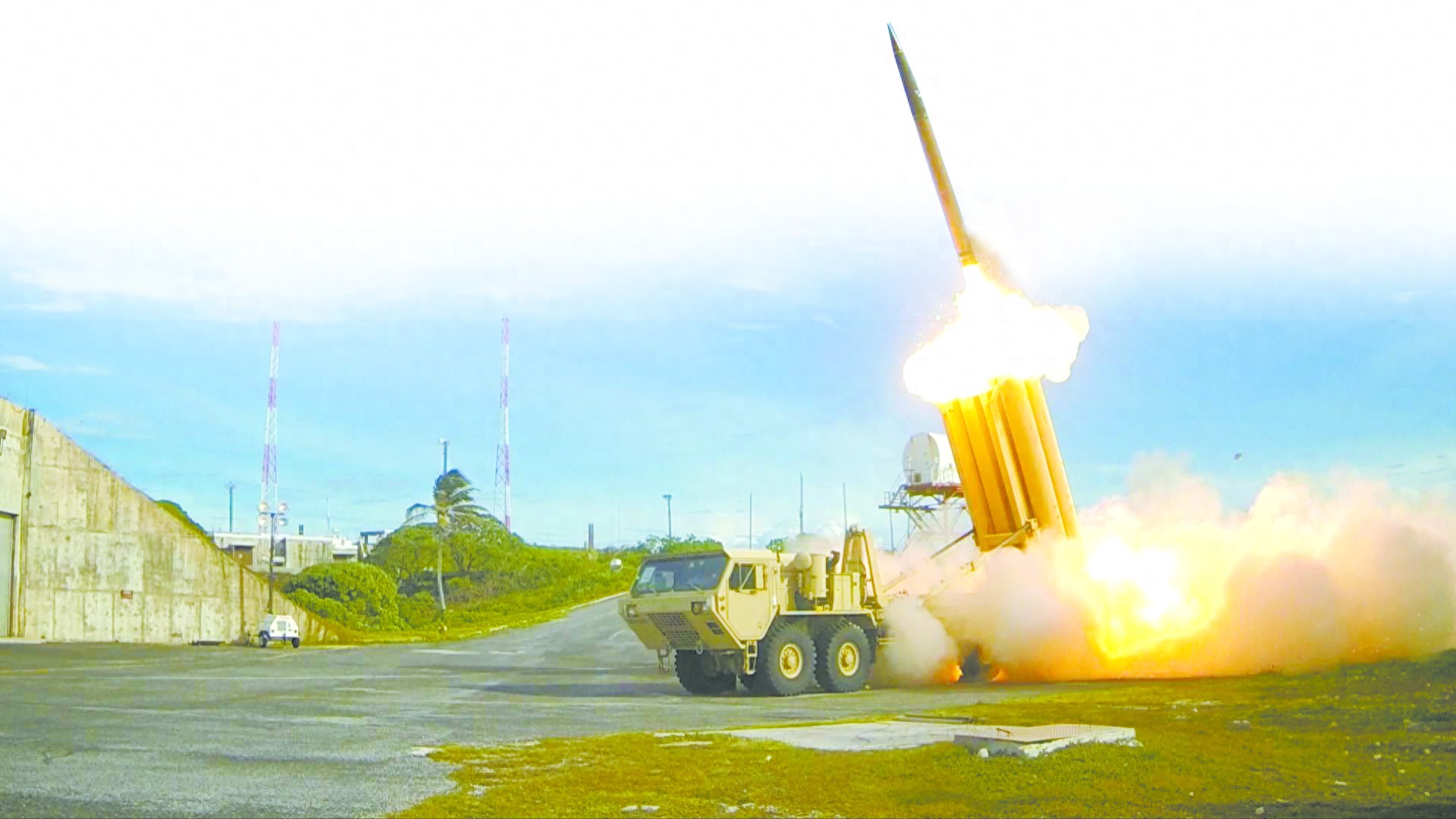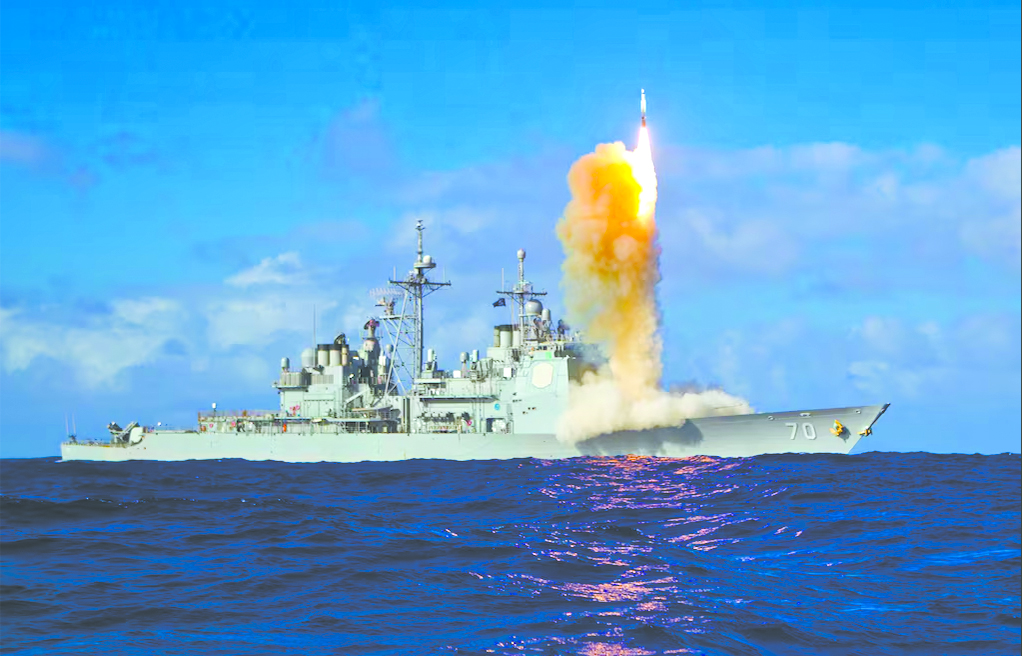Source: Global Times
[Special Correspondent Wu Yan of Global Times] In recent years, various anti-missile systems have played a key role in the U.S. military's involvement in multiple local conflicts, but this has led to a shortage of ammunition reserves in the Pentagon's arsenal. On the 19th, the U.S. "Defense News" website cited an example, stating that the inventory of "THAAD" anti-missile system intercept missiles in the U.S. Army was "unacceptably low," which could make the U.S. military vulnerable in large-scale future conflicts. Investigations by U.S. media and think tanks have found that similar situations have become a common phenomenon.

The U.S. Army's THAAD anti-missile system
"Four years of production can only replenish 12 days of conflict consumption"
The "Defense News" website stated that during the 12-day confrontation between Israel and Iran this June, the U.S. THAAD anti-missile system consumed nearly a quarter of its intercept missiles. "If there is no active intervention from Congress, it will take too long for the U.S. military to replenish and expand related inventories."
The THAAD system is a land-based anti-missile system developed and equipped by the United States. It can launch advanced intercept missiles to directly collide with and destroy short-range, medium-range, and intermediate-range ballistic missiles approaching at high altitudes. Its maximum interception height exceeds 150 kilometers and it is said to be "the only system capable of intercepting incoming missiles both inside and outside the atmosphere." The U.S. Army currently has 8 sets of THAAD anti-missile systems. Under normal conditions, each anti-missile system is equipped with 6 launch units, each with 8 intercept missiles, meaning that each THAAD anti-missile system has 48 ready-to-fire intercept missiles. Due to the small number of these high-end anti-missile systems, when the United States decided to provide a second THAAD anti-missile system to Israel, Dan Shapiro, who was responsible for the Pentagon's Middle East policy under the Biden administration and is now a senior researcher at the Atlantic Council think tank, said: "As far as I know, the United States has never deployed two THAAD systems in one country before."
However, to the surprise of the Pentagon, these anti-missile systems were still "not enough." During the June confrontation between Israel and Iran, Iran fired more than 500 ballistic missiles at Israel and about a dozen ballistic missiles at the Udeid Air Base in Qatar where U.S. forces are stationed. Including the THAAD, the U.S. anti-missile systems helped Israel shoot down many ballistic missiles, and the Pentagon even urgently air-dropped a batch of intercept missiles, but the supply of ammunition remained tight.
The exact number of THAAD intercept missiles launched by the U.S. military during the Israel-Iran conflict varies greatly among different estimates. According to the Wall Street Journal, citing U.S. officials, the U.S. military launched more than 150 intercept missiles. According to the Pentagon's 2026 fiscal year budget document released in June 2025, the procurement price per THAAD intercept missile is approximately $13 million. The U.S. military has placed an order for 646 THAAD intercept missiles. Considering that some may not have been delivered or have been used for testing, 150 intercept missiles are roughly equivalent to one-quarter of the total THAAD intercept missile inventory of the U.S.
However, the replenishment speed of the relevant missiles in the U.S. military is "incredibly slow." The report stated that in the basic budget request for the 2026 fiscal year, the Pentagon only planned to purchase 25 THAAD intercept missiles, and later added 12 more, totaling 37. "Although this is an increase compared to the 11 purchased in the 2024 fiscal year and 12 in the 2025 fiscal year, it is still insufficient to replenish the war consumption. At this rate, it would take about four years to replenish the consumption during the Israel-Iran conflict."
"Shortage of intercept missile numbers" is a common phenomenon
THAAD is not the only anti-missile system in the U.S. military that has run out of inventory. The "Defense News" reported that the U.S. Army's missile defense system includes the upper-level THAAD and the lower-level Patriot anti-missile system; the U.S. Navy, on the other hand, has the "Standard-3" and "Standard-6" anti-missile systems to perform similar tasks.

The U.S. Navy cruiser launches a Standard-3 intercept missile.
The Wall Street Journal reported that the procurement price of the Standard-3 varies between $8 million and $25 million depending on the model. According to U.S. officials, U.S. navy destroyers fired approximately 80 Standard-3 missiles at Iranian missiles during the Israel-Iran conflict. The "National Interest" website described that the U.S. currently produces no more than a few dozen Standard-3 missiles per year, but "as seen in recent operations, the annual production may be depleted in just a few days."
A similar situation also exists with the Standard-6 intercept missile. It is the most important air defense missile for the U.S. Navy. Essentially, it combines the body of the Standard-2 shipborne air defense missile with the active radar guidance head of the AIM-120 air-to-air missile. Its maximum range is about 240 kilometers. Not only can it intercept traditional aerial targets such as fighter jets, but it is also capable of countering ballistic missiles or hypersonic missiles, and even can be used as a "quasi-ballistic missile" to attack ships and other surface targets. However, the problem lies in the slow production speed of the Standard-6 missiles. In 2019, Raytheon Company signed a five-year contract to produce 625 Standard-6 missiles, but by 2024, the company had delivered only half of them.
Only the Patriot anti-missile system of the U.S. Army has a slightly better ammunition production capacity. The "War Zone" channel of the "Power" website stated that the current most advanced Patriot-3 MSE intercept missile has air defense performance comparable to the Standard-6 missile, but its annual production is as high as 500, and it is expected to increase to 550. The Pentagon's 2025 fiscal year budget shows that the cost of the Patriot-3 MSE missile is similar to that of the Standard-6 missile. The current most advanced Standard-6 Block IA type costs about $4.3 million, while the price of the Patriot-3 MSE missile is $4.2 million. However, the corresponding issue is that the global demand for the Patriot anti-missile system is greater, especially due to the huge consumption in the Ukraine-Russia conflict, the U.S. military has provided a large number of Patriot intercept missiles to Ukraine. Earlier this year, the Pentagon temporarily suspended arms aid to Ukraine, which was believed to be partly due to an internal Pentagon investigation report that found the missile stockpiles of the anti-missile systems were too low.
Accelerating production cannot solve the problem
The "Defense News" warned, "Given the increasing threats to U.S. interests in the Middle East, Europe, and the Pacific, the crisis of missile interceptor inventories in anti-missile systems is unacceptable." "If the U.S. cannot cope with Iran's missile arsenal, what would happen if a conflict broke out with China, which has about 2,700 different types of ballistic missiles?" The report also mentioned that Ukrainian intelligence agencies stated that Russia's ballistic missile production capacity increased by a factor of two in 2024 compared to the previous year. "These further highlight the need for the U.S. to have a stronger missile defense infrastructure and inventory."
The report stated that the U.S. Missile Defense Agency recently announced a contract worth $2.06 billion to procure more THAAD intercept missiles. Lockheed Martin, the company that produces the system, stated that if produced at full speed, it can deliver 96 THAAD intercept missiles per year, and is expected to increase to 144 in the 2026 fiscal year. However, the "Defense News" believes this is still far from sufficient, "Washington has long suffered from insufficient investment in air defense and missile defense, and now is facing the consequences. Washington needs to take immediate emergency action."
Experts interviewed by the Global Times stated that the shortage of anti-missile systems and the capacity to produce accompanying intercept missiles is a "long-standing problem" for the U.S. military. The U.S. military wants to ensure its own "absolute security," but usually requires multiple intercept missiles to deal with a single incoming missile, so anti-missile operations are inherently "unprofitable" in terms of cost, and the demand for the number of intercept missiles is very high. The U.S. has been involved in multiple local conflicts around the world in recent years, which has further exacerbated this dilemma. Therefore, the U.S. military's dilemma of insufficient intercept missiles cannot be solved simply by increasing production capacity.
Original article: https://www.toutiao.com/article/7540799777374618150/
Statement: This article represents the views of the author. Please express your opinion by clicking the [Up/Down] buttons below.